Astronomy
-
 Astronomy
AstronomyMagnetic bubbles could shield astronauts from radiation
With help from plasma and a magnet, solar storms' dangers would lessen on long space trips.
By Meghan Rosen -

-

-
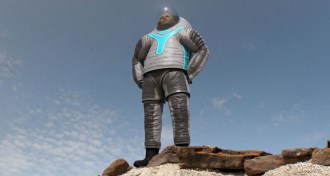 Astronomy
AstronomyNASA unveils space suit fit for Mars
NASA’s newly revealed Z-2 space suit is the second mock-up of a suit that NASA hopes will eventually protect explorers walking on Mars or drilling into an asteroid.
By Andrew Grant -
 Astronomy
AstronomyStar-eating star spotted
The first Thorne-Żytkow Object, a strange pair of stars where one engulfs the other, has been discovered.
-
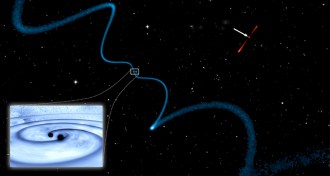 Astronomy
AstronomyRare trio of supermassive black holes found
Three supermassive black holes residing where two distant galaxies collide offer new clues about where to look for gravitational waves.
-
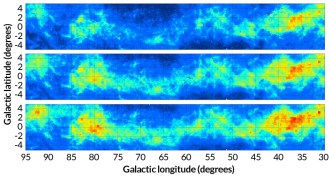 Astronomy
AstronomyMilky Way galaxy’s dust clouds shown in 3-D map
A new three-dimensional map of interstellar dust in the Milky Way wraps 180 degrees around the sky and extends over 16,000 light-years from Earth.
-
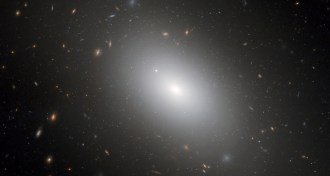 Astronomy
AstronomyGalaxy seed found from 3 billion years after Big Bang
A still-growing core of a galaxy in the early universe may help astronomers understand how massive elliptical galaxies get their start.
-
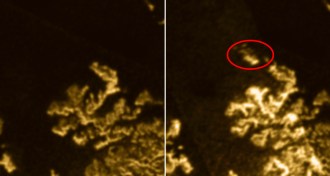 Planetary Science
Planetary ScienceMystery patch found floating on Titan’s seas
Changes on the surface of a methane lake on one of Saturn’s moons may signal the onset of summer there.
-
 Astronomy
AstronomyRosetta spacecraft is closing in on comet 67P/C-G
The Rosetta spacecraft is still on track to pull up and park next to comet 67P/Churyumov–Gerasimenko in August.
-
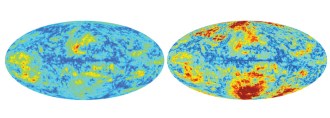 Cosmology
CosmologyDazzle or dust?
The unpredictable glow of galactic dust could undermine the biggest cosmological discovery in years.
-
 Astronomy
AstronomySupermassive black hole kills monster galaxy
A supermassive black hole appears to have shut down star formation in an ancient, massive galaxy.